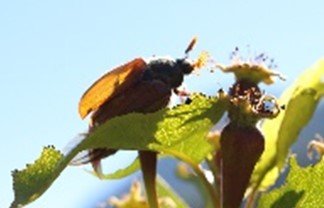Seminar of the Department of Microbiology
A multidisciplinary approach to studying Beauveria spp. and its host Melolontha melolontha
Hannah Embleton, MSc - AG Strasser, Department of Microbiology, University of Innsbruck
18.01.2024, 11:00 - Hybrid
- Join online
- or in presence: HSB4 (Technikerstraße 13b, EG)

Abstract
Beauveria brongniartii, a natural antagonist of the cockchafer (Melolontha melolontha), is employed as a biological control agent to mitigate cockchafer infestations that pose a threat to European grassland areas. However, on steep alpine slopes the currently used granular formulation is not applicable. This necessitates the development of a liquid formulation that can be efficiently injected into the soil using lightweight, maneuverable machinery. As such, this research evaluates which growth structure of BIPESCO 2 holds the greatest potential for formulating a liquid product suitable for field applications. While preliminary trials have indicated the suitability of a culture broth and suspended aerial conidia, this study will delve into the fermentation and use of blastospores. Field trials will be conducted, with close monitoring of both abiotic and biotic factors to discern their influence on fungal establishment in the soil.
It has been widely accepted that the narrow host range of B. brongniartii established it as the primary pathogen of M. melolontha. However, this perception was formed prior to the advent of molecular tools for species identification. A recent study suggests another Beauveria species, specifically B. pseudobassiana, as the predominant pathogen among adult cockchafer beetles. To address these evolving insights, this study aims to analyse the frequency of infection by the two species and identify the most common pathogen of M. melolontha larvae. This will be accomplished through the isolation and identification of the fungi responsible for mycosis in M. melolontha. By addressing these aspects, this research provides valuable insights for refining pest management strategies and understanding ecological interactions.
